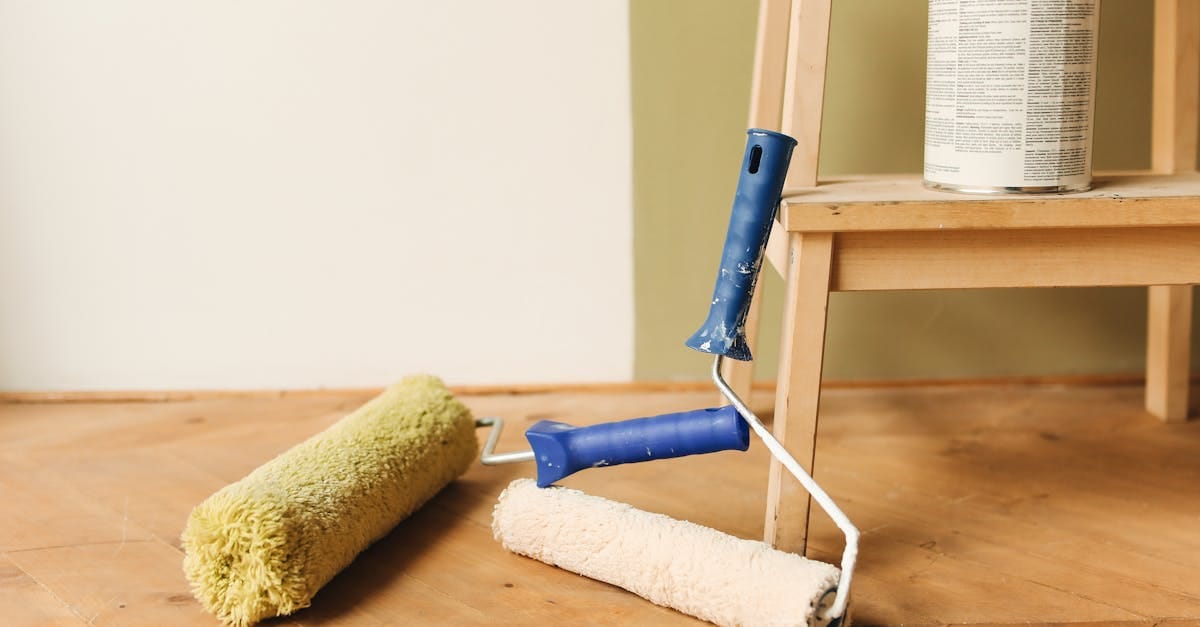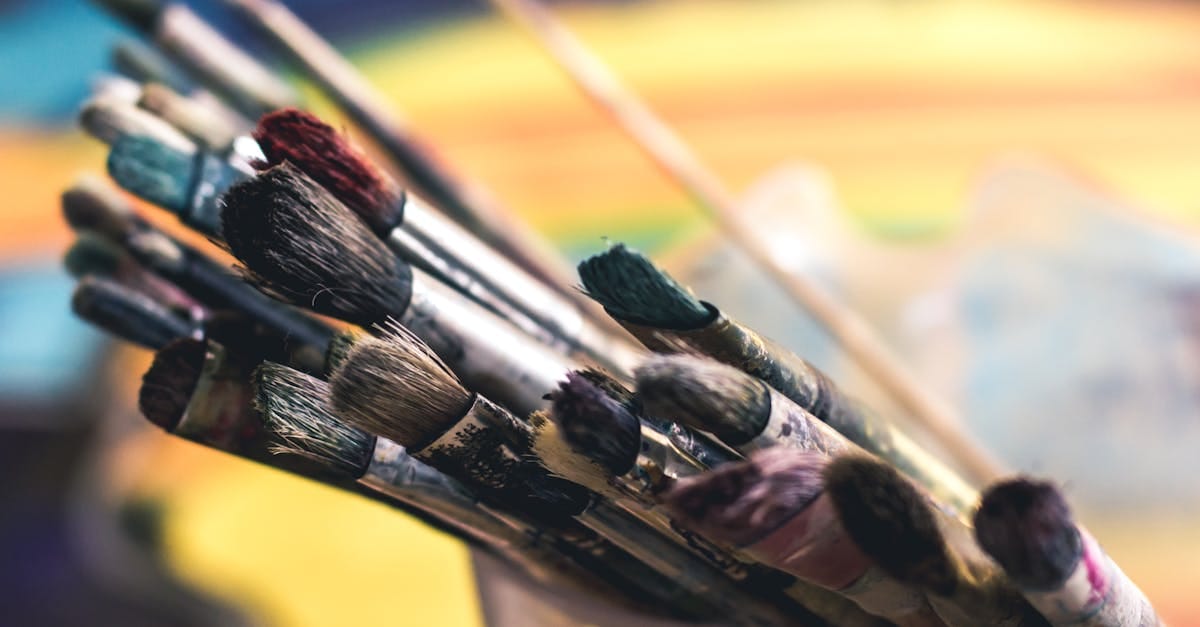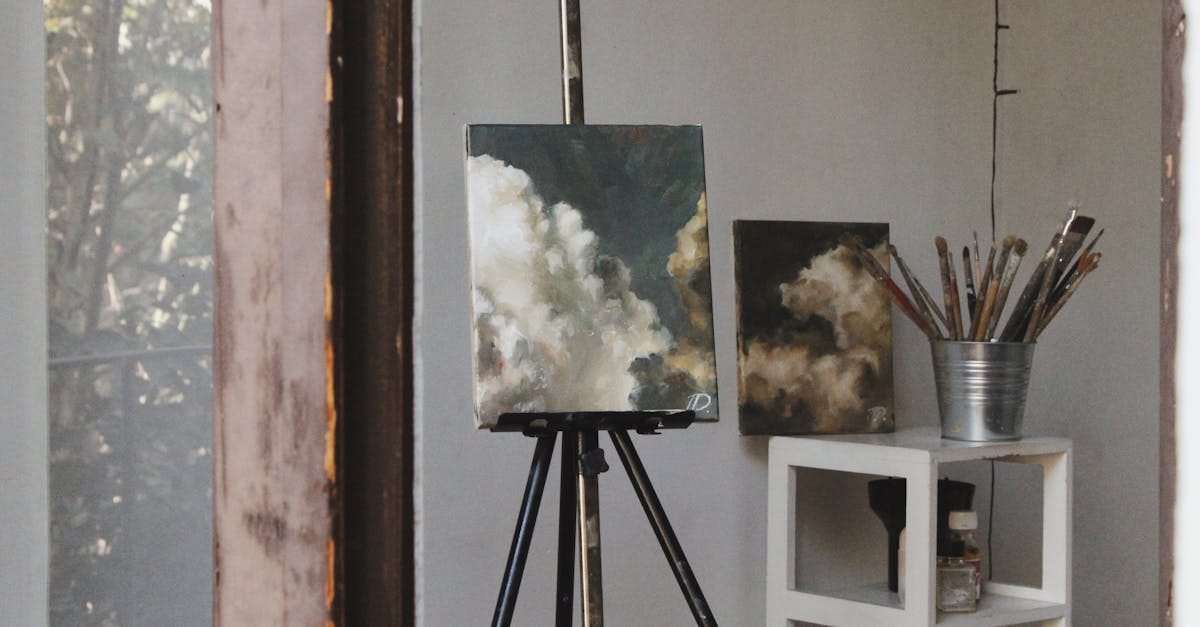Preparing to paint your walls can be a daunting task, but with the right tools, achieving a professional finish is entirely possible. This article highlights 16 essential tools that every homeowner needs, from top-quality brushes and rollers to effective wall cleaners and painter’s tape. You’ll also learn about crucial accessories, like touch-up tools and sturdy ladders, that ensure smooth execution. Additionally, the article discusses 7 tools that can be easily skipped, providing insights on what to prioritize and what to avoid during your painting project. Get ready to transform your space with confidence!
Latest Trends in Painting and Space Renewal
Are you ready to transform your living or working space into a vibrant and inviting environment? The world of painting is constantly evolving, with new techniques, colors, and materials making their debut. In both residential and commercial settings, the right paint colors can breathe new life into your surroundings, while innovative painting techniques can enhance the overall aesthetic and functionality of a space.
Homeowners and business owners alike are on the lookout for ways to rejuvenate their properties, and understanding the current trends in painting can help achieve that goal. From bold accent walls to soft, muted tones, the choices are limitless. It’s essential to consider how these colors and styles impact not only the look but the overall atmosphere. A beautifully painted space can evoke feelings of calm and comfort or stimulate creativity and energy.
In this article, we’ll explore the most popular trends in painting and space renewal, providing practical tips and examples from real-life projects that demonstrate the transformative power of thoughtful color selection and painting techniques.

Essential Painting Tools: What to Use and What to Skip
| Tool | Importance |
|---|---|
| Wall Cleaner | Prepares the surface for better paint adhesion. |
| Painter’s Tape | Ensures clean lines when applied correctly. |
| Quality Brushes | Provide a smooth finish and control for detail work. |
| Standard Roller | Ideal for covering large areas quickly and efficiently. |
| Canvas Drop Cloths | Durable and reusable to protect floors and furniture. |
| Paint Brush Cleaner | Extends the life of your brushes by keeping them clean. |
| Plastic Bucket | Convenient for pouring and mixing paint. |
| Plastic Roller Tray | Easier to clean than metal, making it more practical. |
| Roller Extension Pole | Helps reach high areas without the need for ladders. |
| Sturdy Ladder | A safe way to access high walls and ceilings. |
| Touch Up Tool | Great for quick fixes without needing to repaint entire wall. |
| Pre-Mixed Spackling | Perfect for filling holes and imperfections. |
| Putty Knife | Essential for applying spackling and joint compound. |
| Sanding Sponges | Useful for smoothing surfaces before painting. |
| Rags | Essential for cleaning up spills and drips quickly. |
| Paint Key | Unnecessary as a flat-head screwdriver works just fine. |
| Fillable Paint Products | Often impractical and hard to clean, opt for traditional tools. |
Latest Trends in Painting and Revitalizing Residential and Commercial Spaces
In recent years, the world of interior design and renovation has seen a significant shift towards personalization and sustainability. Homeowners and business owners alike are seeking ways to breathe new life into their spaces, using color and technique to create environments that not only look beautiful but also feel welcoming and functional. This article will explore the latest trends in painting, covering innovative techniques and color palettes that can transform any space into a stunning visual narrative.
The Power of Color in Space Transformation
Color is one of the most powerful tools in a designer’s arsenal, capable of influencing mood and changing perceptions in ways that can both delight and surprise. Understanding how different shades interact can help ensure that a space is not only aesthetically pleasing but also functional. For example, a deep navy blue can evoke a sense of calm in a personal study, while a cheerful yellow can energize a kitchen or a workspace.
Trending Color Palettes
- Earthy Tones: Shades of green, terracotta, and brown are rising in popularity, reflecting a growing desire to connect with nature. These colors can create a soothing backdrop that promotes relaxation and contemplation.
- Bold Contrasts: Pairing deep colors with bright hues can create a modern yet inviting atmosphere. Consider a rich charcoal accent wall complemented by vibrant coral or teal decor for an eye-catching effect.
- Pastel Shades: Soft pinks and blues continue to charm many households, providing a subtle touch of color that feels both comforting and stylish.
These trending color palettes create a beautiful canvas for both residential and commercial spaces. For instance, a local coffee shop that utilized earthy tones to paint its walls reported an increase in customer dwell time, as patrons felt more relaxed and welcomed by the natural palette.
Innovative Painting Techniques
Moving beyond traditional painting methods, innovative techniques are emerging that allow for unique expressions of creativity. Homeowners can explore these techniques to emphasize architectural features or add a distinctive flair to their interiors.
Ombre and Gradient Techniques
Ombre painting, characterized by a gradual blending of one color hue to another, can add depth and interest to a room. For instance, a bedroom with an ombre wall transitioning from a soft lavender to a pristine white can create a serene atmosphere perfect for unwinding after a long day. This technique also works well in commercial settings, such as spas or salons, where tranquility is a priority.
Textured Finishes
Using textured surfaces, such as stenciling, sponging, or rag-rolling, can create visually captivating spaces. A living room adorned with a sponged gold finish can appear luminous and inviting, a testament to the transformation achievable with just a few additional steps beyond standard painting. Consider the adaptability of textured finishes in commercial environments, where they can enhance a brand’s image by creating an identifiable and memorable space.
The Importance of Quality Supplies
The saying «you get what you pay for» holds particularly true in the realm of painting. Investing in quality materials and tools not only simplifies the painting process but also enhances the final results. High-quality paints tend to cover better and last longer, reducing the need for frequent touch-ups.
Essential Painting Tools
- High-Quality Brushes and Rollers: A selection of quality brushes and rollers can significantly impact the ease of application and finish quality. Look for reputable brands that ensure durability and performance.
- Painter’s Tape: Achieve crisp lines with painter’s tape, which aids in defining edges, especially when transitioning between colors.
- Proper Cleaning Supplies: Ensuring surfaces are clean before applying paint is crucial; consider using a gentle cleaning solution to prepare walls.
Drawing from past experiences, one homeowner revamped their outdated kitchen by prioritizing quality supplies. After investing in top-notch brushes and premium paint, they reported not only a transformed space but also a gratifying experience during the process.
Practical Tips for Homeowners
While embarking on a painting project can be exciting, it can also be daunting without the right preparation. Here are some practical tips for homeowners looking to navigate their painting journey seamlessly:
- Test Your Colors: Always test paint colors in various lighting conditions. A shade that looks stunning under natural light may appear stark under fluorescent lights and vice versa.
- Seek Inspiration: Peruse social media platforms or design magazines for the latest trends and seek inspiration from successful transformations. Consider platforms like Instagram or Pinterest for creative ideas.
- Plan Your Timeline: Proper planning can alleviate stress. Estimate how long each stage of the painting process will take and prepare accordingly to make provisions for drying times and weekends.
By following these practical tips, the painting process will feel more manageable and enjoyable, allowing for a stunning transition into renewed spaces. Each color choice and technique can narrate a story that aligns closely with personal style and professional aspirations.
Embrace Professional Help When Needed
It’s important to recognize when a project requires professional expertise. Hiring painting professionals ensures a high-quality finish and saves time for those who juggle busy schedules. In some cases, complex jobs or extensive renovations may need specialized skills that require more than just basic DIY knowledge.
Finding the Right Professionals
When seeking professional assistance, consider reaching out to local experts who have a proven track record in painting and renovation. Look for testimonials and portfolios that demonstrate their capability in handling similar projects. At TS Painting & Restoration, for example, insights and trends are shared to ensure homeowners not only love their finished spaces but also feel proud of the processes that brought them to life. Explore more about available services and painting trends by visiting this link.
Ultimately, your choice of colors, tools, and techniques will shape your space in amazing ways. Whether you’re looking to create a vibrant office environment or a cozy home sanctuary, embracing the latest trends in painting and renovation can revitalize your surroundings and enhance your overall experience. Delve deeper into this world of colors and creativity by exploring trending color palettes and consider how these trends can best fit your own unique style.

Transform Your Space Today!
Ready to give your home or business a fresh look? Our expert painting services and renovation solutions can help you create the perfect atmosphere. From choosing the right color scheme to innovative painting techniques, we are here to guide you every step of the way. Don’t wait—experience the benefits of a beautifully refreshed space!
Latest Trends and Tips in Painting and Space Renovation
Current Trends in Painting
- Bold Colors: Utilizing rich hues such as navy blue, emerald green, or deep burgundy can create a striking focal point in any room. These colors are excellent for accent walls or even entire rooms.
- Textured Finishes: Incorporating textured paint or techniques such as sponging or rag rolling can add depth and character to walls, making a space feel unique and personalized.
- Eco-friendly Paints: Focus on using low-VOC or zero-VOC paints. These options are better for indoor air quality and are gaining popularity among environmentally conscious homeowners.
- Matte Finishes: The rise of matte paints has shifted the aesthetic away from shiny finishes, providing a more sophisticated look that also helps hide imperfections on the walls.
Practical Tips for Effective Painting
- Prepare Your Walls: Always clean your walls before painting. A dirty surface can lead to poor adhesion and an uneven finish. For surface cleaning, consider using a solution of water and a gentle detergent.
- Invest in Quality Tools: Using quality brushes and rollers makes a significant difference in achieving smooth, even coverage. Don’t compromise on tools to save a few dollars.
- Painter’s Tape Technique: Apply painter’s tape carefully, and to enhance its effectiveness, run a damp rag along the edge to create a better seal, which will help prevent paint bleed.
- Plan Your Color Scheme: Before starting, experiment with different color combinations to find what works best for your space. Try painting samples on your walls to see how they look in different lighting throughout the day.
- Proper Lighting is Key: Ensure adequate lighting while painting to avoid missed spots or misjudgments in color choice. Natural light, in particular, plays a crucial role in accurately seeing colors.
- Use Drop Cloths: Protect your floors and furniture with canvas or plastic drop cloths, they will help minimize damage and clean-up time.
- Take Your Time: Rushing through a painting project often results in mistakes. Take the time to prep and allow layers to dry properly for the best outcome.
«`html
Frequently asked questions
Glossary of Key Terms in Painting and Space Renovation
- Color Palette
- The selection of colors used in a particular painting project, which can influence mood and aesthetics.
- Texture
- The surface quality of a painted area, which can be smooth, rough, matte, or shiny, affecting how light interacts with it.
- Finishing Coat
- The final layer of paint applied to achieve the desired appearance and durability of the painted surface.
- Primer
- A preparatory coating applied before paint to enhance adhesion, coverage, and durability of the finish coat.
- Accent Wall
- A wall painted in a different color or texture than the others to create a focal point in a room.
- Brush Techniques
- Methods used while painting with a brush to achieve specific effects, such as sweeping, dabbing, or stippling.
- Surface Preparation
- The process of cleaning and repairing surfaces before painting to ensure optimal paint adhesion and finish quality.
- Eco-Friendly Paint
- A type of paint that has low levels of volatile organic compounds (VOCs) and is less harmful to the environment and human health.
- Spackling
- An application used to fill small holes and imperfections in walls before painting, ensuring a smooth surface.
- Roller Napping
- The texture of the roller cover, which determines the amount of paint it holds and the finish it leaves on a surface.
Conclusion
Preparing to paint your walls is crucial for achieving a flawless finish. By investing in quality painting tools and understanding which products are essential versus those that can be skipped, you position yourself to transform your residential or commercial space effectively. Pay attention to preparation with a clean surface, proper tools like angled brushes and canvas drop cloths, and make wise choices about your painting accessories. Remember, quality matters as it significantly impacts the final result. Embrace these tips and equip yourself with the right knowledge to embark on your painting journey with confidence.
Preparing to Paint Your Walls: Essential Tools for a Professional Finish
Necessary Supplies
To achieve a beautiful and lasting paint job, it’s crucial to have the right tools at your disposal. Here is a list of essential items that will set you up for success:
- Wall Cleaner: Clean your walls to ensure paint adhesion. A mix of classic cleaner and water will help eliminate dirt.
- Painter’s Tape: Invest in quality tape like 3M or Frogtape, and don’t forget to seal the edges with a damp rag.
- Brushes: Use a 2 1/2-inch angled brush for precision work on trim.
- Rollers: A standard 9-inch roller with a synthetic core works well. Check its quality by testing the core before purchase.
- Canvas Drop Cloths: Protect your floors and furniture with durable canvas drop cloths; they are a great long-term investment.
- Plastic Bucket: For easy pouring of paint, a plastic bucket is more efficient than using original paint containers.
- Sturdy Ladder: A reliable ladder is essential for reaching high spots safely.
Optional Tools to Consider
While the following tools are helpful, you may find that you can skip them without affecting your project:
- Paint Key: A standard flat-head screwdriver will serve just as well for opening paint cans.
- Paint Tray Liners: Save on waste by using a quality hard plastic paint tray instead.
- Paint Edgers: For crisp lines, proper taping with an angled brush is a better choice.
- Sanding Sponges: Consider using a damp sponge instead of traditional sanding to avoid dust.
- Fillable Paint Products: These tools can complicate the process; a simple roller works better.
- Plastic Tube for Paint Roller: Wrap your roller in plastic instead of investing in a separate product.
- Paint Mixer Gadgets: A traditional paint stick does the job without added expense.
Transform Your Space Today!
Ready to revitalize your home or business with a fresh coat of paint? Our expert team at TS Painting & Restoration specializes in creating beautiful environments that reflect your style while enhancing the ambiance. From selecting the latest trending colors to using innovative painting techniques, we’re here to help you achieve your vision.
Mariana Pons is the visionary behind some of the most stunning transformations at TS Painting & Restoration. With a strong background in design and renovation, she has empowered countless clients in Florida to revitalize their homes and businesses with her expert painting solutions. Born in the Dominican Republic and raised in New York, Mariana seamlessly blends urban sophistication with tropical charm in her approach.
Her philosophy revolves around transformative energy. Mariana thrives on taking outdated or neglected spaces and turning them into vibrant, inviting environments. Her project portfolio is filled with compelling before-and-after stories that highlight her skill in overcoming challenges and delivering exceptional results, making her a trusted partner for clients seeking to enhance their spaces.
Outside of work, Mariana enjoys exploring new cultures through travel, indulging in culinary experiences, and staying ahead of the latest interior design trends. She believes that every project is not just a task, but an opportunity to create something extraordinary that reflects the personality and desires of her clients.
At TS Painting & Restoration, Mariana is committed to using high-quality materials and innovative techniques to ensure each painting project exceeds expectations. Her passion for color and design enables her to guide clients in selecting the perfect palettes that breathe life into their spaces, making every home and business a true reflection of individuality.


